Flying Ants vs. Termites: How to Tell The Difference & What to Do About Them
What can cause more than $5 billion of property damage in the United States every year?
Termites. They are the most destructive pest you have to fight in Central and Southern Maryland.
Fighting them would certainly be easier if we could find them hiding in our houses and distinguish them among other pests. Yep, termites are incredibly sneaky. And they tend to look like other pests.
One of the bugs they resemble is flying ants.
Knowing how much damage your home could suffer from termites might have you seeing them every time you turn your head, worried about imminent home destruction. You might be asking yourself, “How do I know if I have termites or flying ants?”
Use This Pest Guide to Identify & Eliminate 28 Different Pests!We’re here to help ease your concerns. Let’s review the differences between these pests so you can better identify if termites are an issue in your house.
Differences Between Flying Ants and Termites
Most of the time you can distinguish between common pests in your home. A cockroach, a mouse, a mosquito, and a stink bug are all pretty different and immediately identifiable.
But some insects are a little harder to name than others.
Enter flying ants vs. termites. At a quick glance, they look very similar. Here are some key discrepancies between the two.
Insect Body Shape and Color
When it comes to color and body shape, the differences between flying ants and termites are apparent.
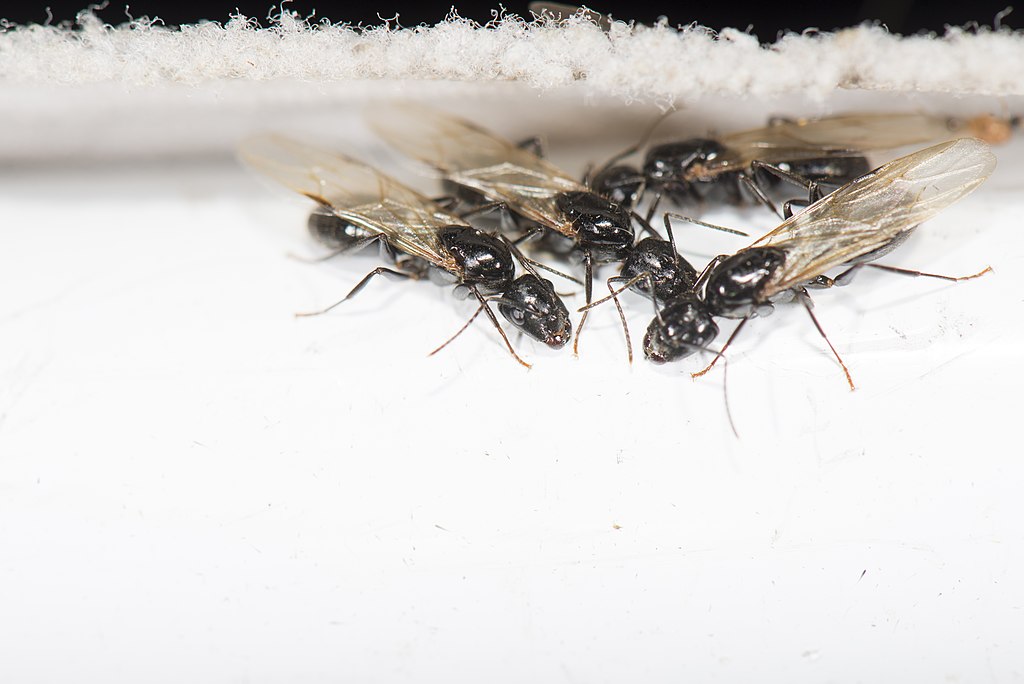 A flying ant has a defined narrow waist at its center, while a termite is waist-less with more of an oblong body.
A flying ant has a defined narrow waist at its center, while a termite is waist-less with more of an oblong body.
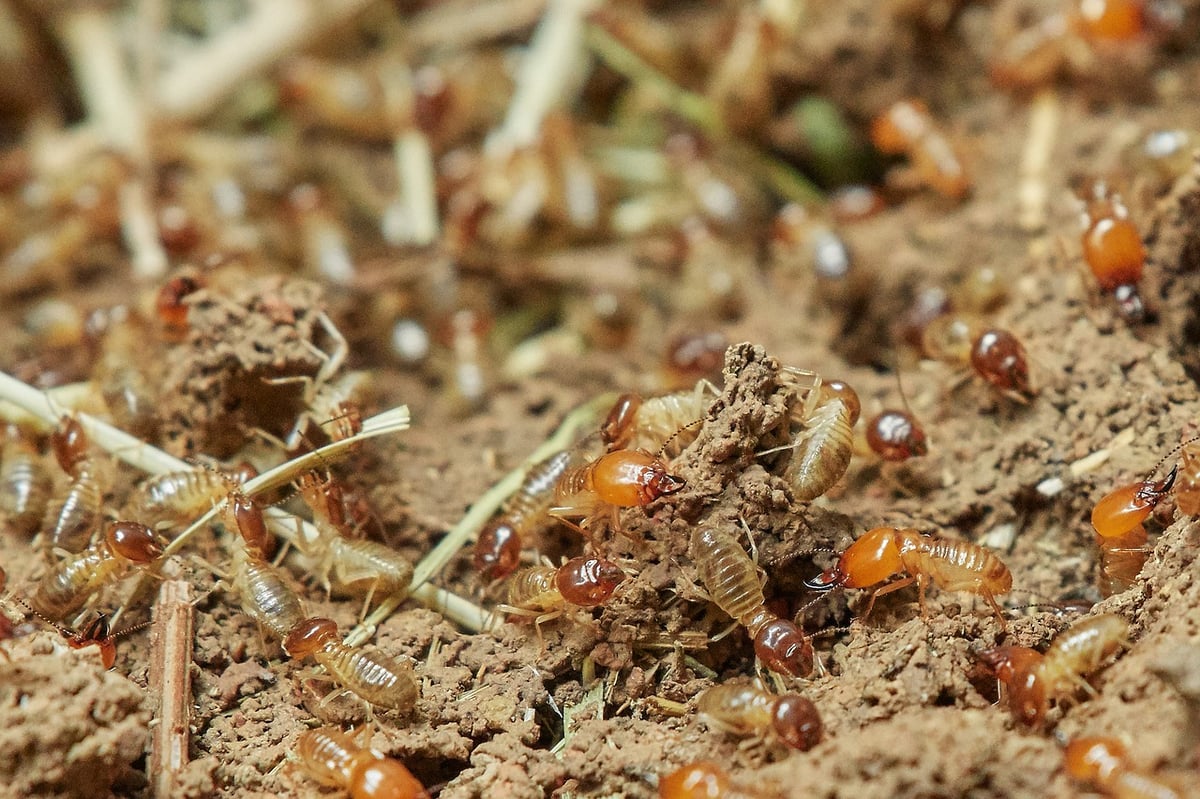 Ants are reddish brown, while termites are lighter, even creamy white in color. Ants might be easy to spot in the daylight, but termites will avoid light.
Ants are reddish brown, while termites are lighter, even creamy white in color. Ants might be easy to spot in the daylight, but termites will avoid light.
Insect Wings
The wings of both of these pests is what really confuses people.
Luckily, the wings are quite different when it comes to flying ants vs. termites. Ants have back wings that are shorter than their front wings, while termites have front and back wings of equal size.
 Also, the major time of year you see termites flying is in April and May when they swarm. This is when they fly into the air, drop to the ground, shed their wings, and look for a mate. If you see pests that look like flying ants in spring, it’s likely they are termites. This is especially true if you’re also seeing other signs and identifiers of termite infestation.
Also, the major time of year you see termites flying is in April and May when they swarm. This is when they fly into the air, drop to the ground, shed their wings, and look for a mate. If you see pests that look like flying ants in spring, it’s likely they are termites. This is especially true if you’re also seeing other signs and identifiers of termite infestation.
Insect Antennae
If you can get close enough to spot antenna differences between flying ants and termites, you’ll find another distinction.
An ant’s antennae are bent, while a termite's antennae are straight.
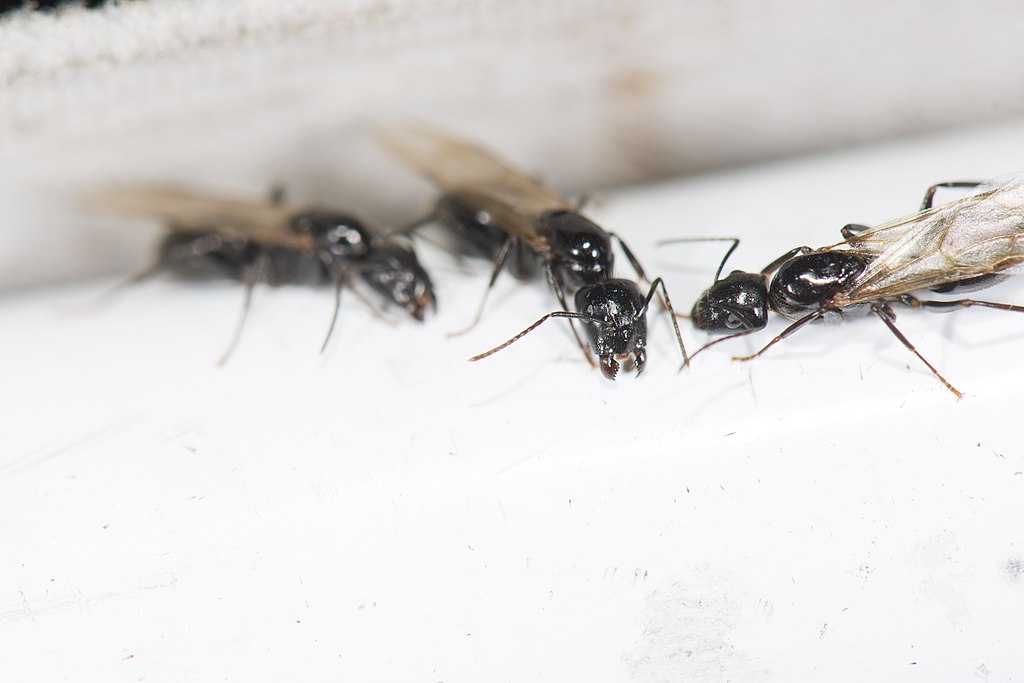
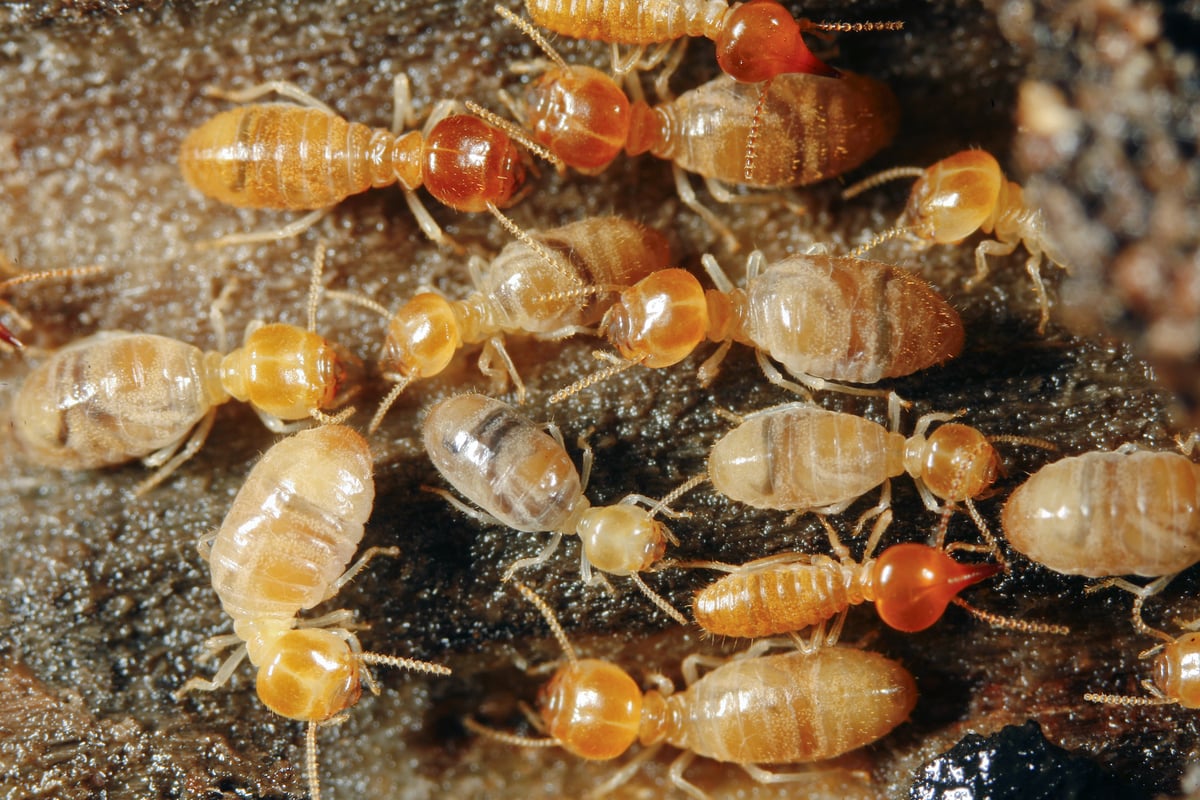
Insect Behavior
The movement and chores of flying ants vs. termites is also quite different.
Carpenter ants dig into wood to excavate their nests. They don’t eat the wood; they push it out of their way to form galleries to their colonies. So if you see small piles of wood shavings beneath holes, that’s likely the result of carpenter ants.
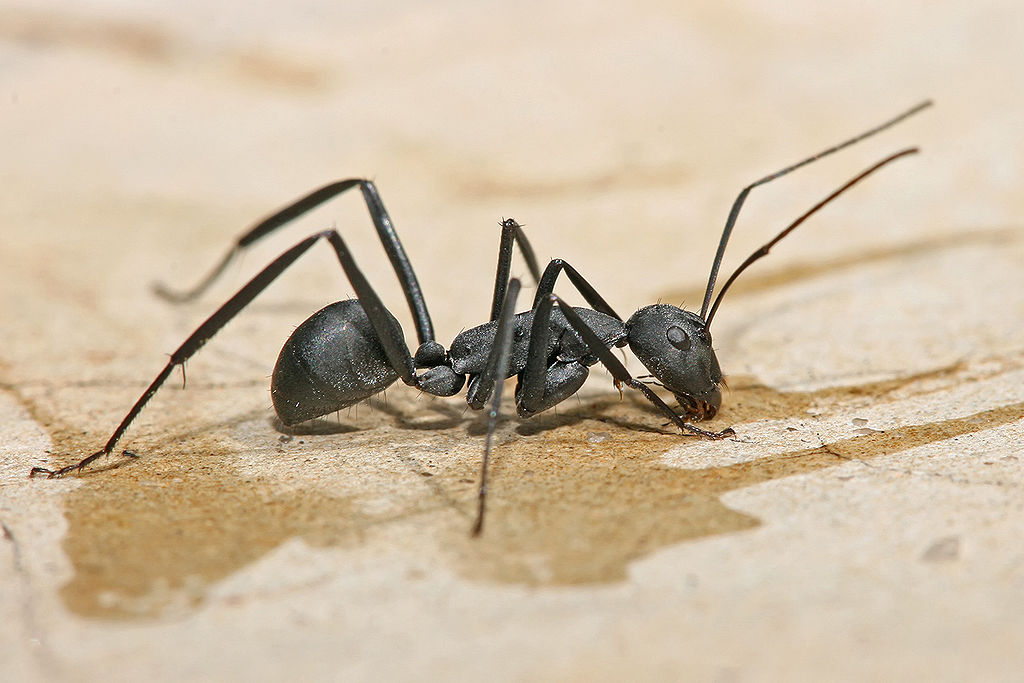
Carpenter ants like moist, damaged wood for excavation, and while termites prefer this type of wood as well, they will also chew through healthy wood.
And if you see mud tubes, this is an obvious indicator of termites. Mud tubes are about ⅛” thick tubes that protect termites as they travel between their underground colonies to your home to find wood to eat. They extend over foundation walls or support beams over wood, concrete, cinder blocks, or even in mid-air to help the termites get to where they need to go.
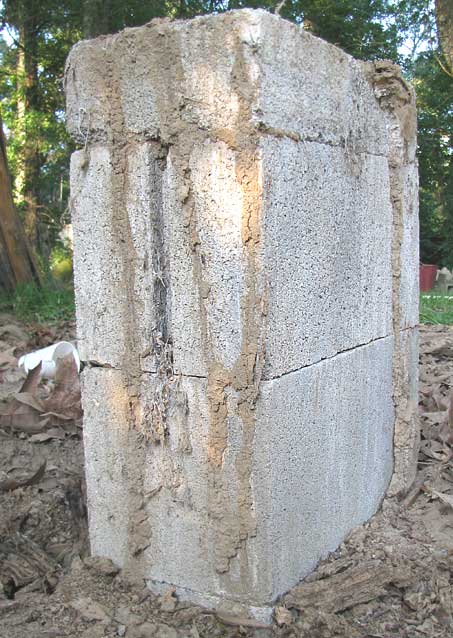
How to Get Rid of Flying Ants
If you think you see flying ants, they are likely carpenter ants.
When you’re thinking about how to get rid of flying ants, pest control professionals can help. They will use contact insecticides to control the ant population in your home or non-repellant ant control baits that lure ants to a hidden protein or sugar source that they take back to their nest, taking down the colony.
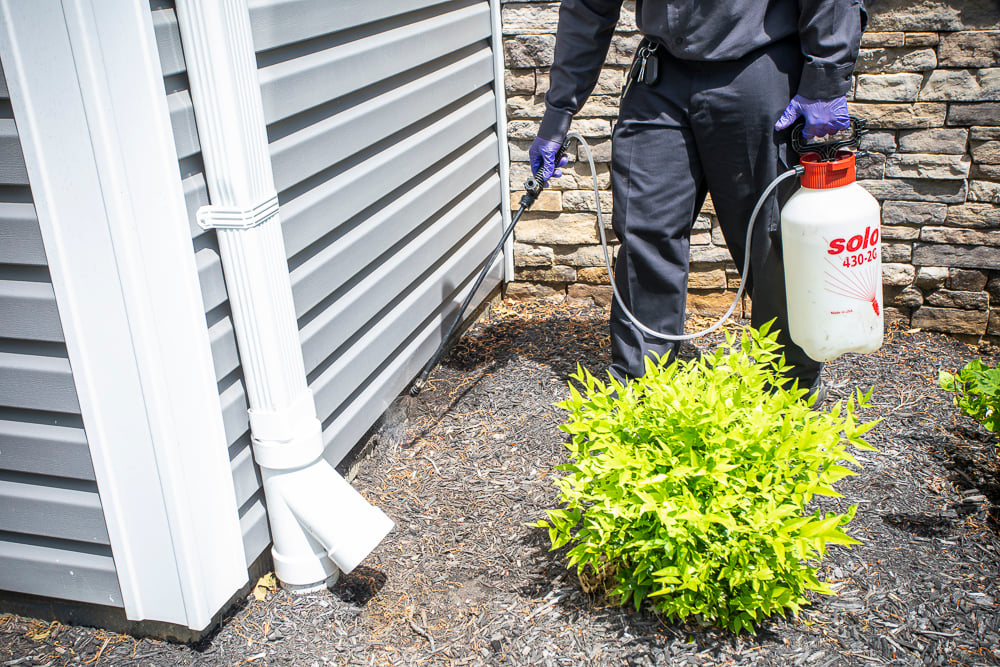 Once your carpenter ant infestation is gone, outside perimeter treatments can help keep them away. These treatments have a smell or taste ants don’t like so they won’t come near it or cross over it to enter your home.
Once your carpenter ant infestation is gone, outside perimeter treatments can help keep them away. These treatments have a smell or taste ants don’t like so they won’t come near it or cross over it to enter your home.
How to Get Rid of Termites
With termites, spotting any of these identifiers above means you should quickly implement a control plan before they cause too much damage to your Maryland home.
First, call a pest control professional to conduct a termite inspection. Usually this service is free unless it’s part of a home inspection or real estate transaction. The exterminator will need to get inside your home during the inspection to find the source of your termite problem.
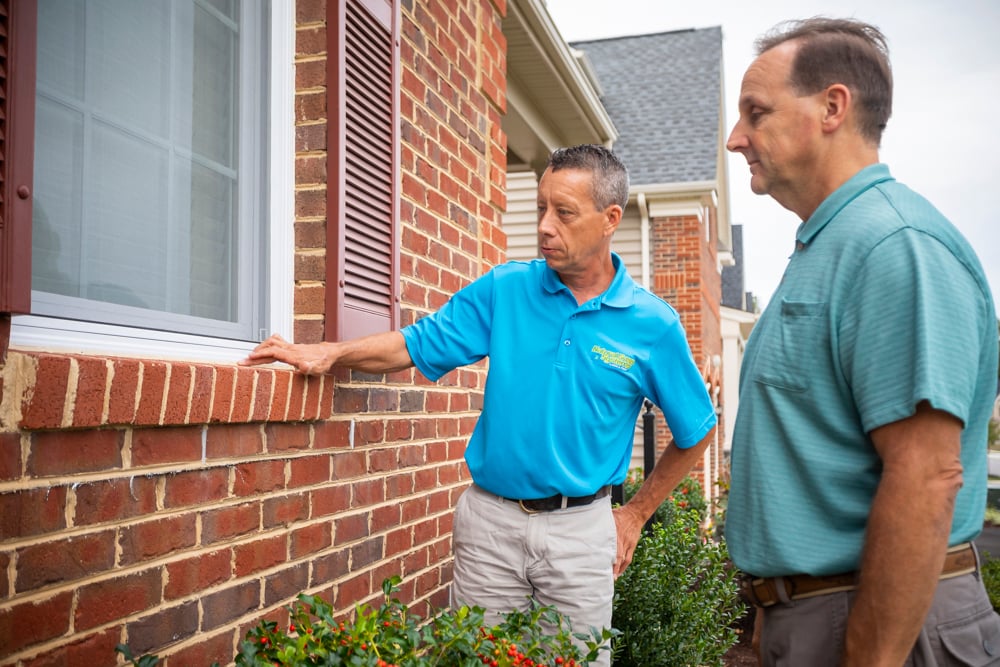 Then, your exterminator will implement some control strategies if they found termites. When planning how to get rid of termites, your pest control technician will do a trench-and-rod treatment, digging a shallow trench around your home’s foundation and inserting a termiticide every 1.5 to 2 feet to form a complete barrier.
Then, your exterminator will implement some control strategies if they found termites. When planning how to get rid of termites, your pest control technician will do a trench-and-rod treatment, digging a shallow trench around your home’s foundation and inserting a termiticide every 1.5 to 2 feet to form a complete barrier.
 Termite treatments are usually guaranteed, as long as you sign up for an annual inspection so professionals can determine whether or not termites have broken through the barrier. They will also strengthen your barrier at this time. This is a very important part of the service since termites are likely to return to areas they’ve been before.
Termite treatments are usually guaranteed, as long as you sign up for an annual inspection so professionals can determine whether or not termites have broken through the barrier. They will also strengthen your barrier at this time. This is a very important part of the service since termites are likely to return to areas they’ve been before.
We don’t want you to worry about what insect is taking over your home. Give Natural Green Systems a call today for help identifying your pest problem. We’ll bring our proven pest control experience and create a custom plan for your Central and Southern Maryland home.
Image Source: Termites in dirt, carpenter ant, mud tubes, flying ants, flying ants 2
What can cause more than $5 billion of property damage in the United States every year?
Termites. They are the most destructive pest you have to fight in Central and Southern Maryland.
Fighting them would certainly be easier if we could find them hiding in our houses and distinguish them among other pests. Yep, termites are incredibly sneaky. And they tend to look like other pests.
One of the bugs they resemble is flying ants.
Knowing how much damage your home could suffer from termites might have you seeing them every time you turn your head, worried about imminent home destruction. You might be asking yourself, “How do I know if I have termites or flying ants?”
Use This Pest Guide to Identify & Eliminate 28 Different Pests!We’re here to help ease your concerns. Let’s review the differences between these pests so you can better identify if termites are an issue in your house.
Differences Between Flying Ants and Termites
Most of the time you can distinguish between common pests in your home. A cockroach, a mouse, a mosquito, and a stink bug are all pretty different and immediately identifiable.
But some insects are a little harder to name than others.
Enter flying ants vs. termites. At a quick glance, they look very similar. Here are some key discrepancies between the two.
Insect Body Shape and Color
When it comes to color and body shape, the differences between flying ants and termites are apparent.
 A flying ant has a defined narrow waist at its center, while a termite is waist-less with more of an oblong body.
A flying ant has a defined narrow waist at its center, while a termite is waist-less with more of an oblong body.
 Ants are reddish brown, while termites are lighter, even creamy white in color. Ants might be easy to spot in the daylight, but termites will avoid light.
Ants are reddish brown, while termites are lighter, even creamy white in color. Ants might be easy to spot in the daylight, but termites will avoid light.
Insect Wings
The wings of both of these pests is what really confuses people.
Luckily, the wings are quite different when it comes to flying ants vs. termites. Ants have back wings that are shorter than their front wings, while termites have front and back wings of equal size.
 Also, the major time of year you see termites flying is in April and May when they swarm. This is when they fly into the air, drop to the ground, shed their wings, and look for a mate. If you see pests that look like flying ants in spring, it’s likely they are termites. This is especially true if you’re also seeing other signs and identifiers of termite infestation.
Also, the major time of year you see termites flying is in April and May when they swarm. This is when they fly into the air, drop to the ground, shed their wings, and look for a mate. If you see pests that look like flying ants in spring, it’s likely they are termites. This is especially true if you’re also seeing other signs and identifiers of termite infestation.
Insect Antennae
If you can get close enough to spot antenna differences between flying ants and termites, you’ll find another distinction.
An ant’s antennae are bent, while a termite's antennae are straight.


Insect Behavior
The movement and chores of flying ants vs. termites is also quite different.
Carpenter ants dig into wood to excavate their nests. They don’t eat the wood; they push it out of their way to form galleries to their colonies. So if you see small piles of wood shavings beneath holes, that’s likely the result of carpenter ants.

Carpenter ants like moist, damaged wood for excavation, and while termites prefer this type of wood as well, they will also chew through healthy wood.
And if you see mud tubes, this is an obvious indicator of termites. Mud tubes are about ⅛” thick tubes that protect termites as they travel between their underground colonies to your home to find wood to eat. They extend over foundation walls or support beams over wood, concrete, cinder blocks, or even in mid-air to help the termites get to where they need to go.

How to Get Rid of Flying Ants
If you think you see flying ants, they are likely carpenter ants.
When you’re thinking about how to get rid of flying ants, pest control professionals can help. They will use contact insecticides to control the ant population in your home or non-repellant ant control baits that lure ants to a hidden protein or sugar source that they take back to their nest, taking down the colony.
 Once your carpenter ant infestation is gone, outside perimeter treatments can help keep them away. These treatments have a smell or taste ants don’t like so they won’t come near it or cross over it to enter your home.
Once your carpenter ant infestation is gone, outside perimeter treatments can help keep them away. These treatments have a smell or taste ants don’t like so they won’t come near it or cross over it to enter your home.
How to Get Rid of Termites
With termites, spotting any of these identifiers above means you should quickly implement a control plan before they cause too much damage to your Maryland home.
First, call a pest control professional to conduct a termite inspection. Usually this service is free unless it’s part of a home inspection or real estate transaction. The exterminator will need to get inside your home during the inspection to find the source of your termite problem.
 Then, your exterminator will implement some control strategies if they found termites. When planning how to get rid of termites, your pest control technician will do a trench-and-rod treatment, digging a shallow trench around your home’s foundation and inserting a termiticide every 1.5 to 2 feet to form a complete barrier.
Then, your exterminator will implement some control strategies if they found termites. When planning how to get rid of termites, your pest control technician will do a trench-and-rod treatment, digging a shallow trench around your home’s foundation and inserting a termiticide every 1.5 to 2 feet to form a complete barrier.
 Termite treatments are usually guaranteed, as long as you sign up for an annual inspection so professionals can determine whether or not termites have broken through the barrier. They will also strengthen your barrier at this time. This is a very important part of the service since termites are likely to return to areas they’ve been before.
Termite treatments are usually guaranteed, as long as you sign up for an annual inspection so professionals can determine whether or not termites have broken through the barrier. They will also strengthen your barrier at this time. This is a very important part of the service since termites are likely to return to areas they’ve been before.
We don’t want you to worry about what insect is taking over your home. Give Natural Green Systems a call today for help identifying your pest problem. We’ll bring our proven pest control experience and create a custom plan for your Central and Southern Maryland home.
Image Source: Termites in dirt, carpenter ant, mud tubes, flying ants, flying ants 2
Share This
Topics: Pest Control


